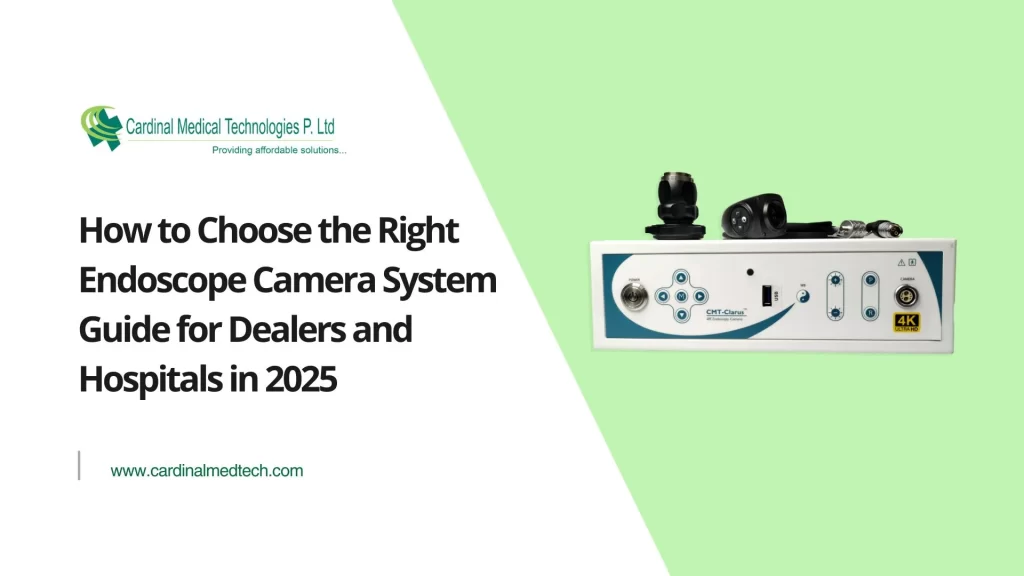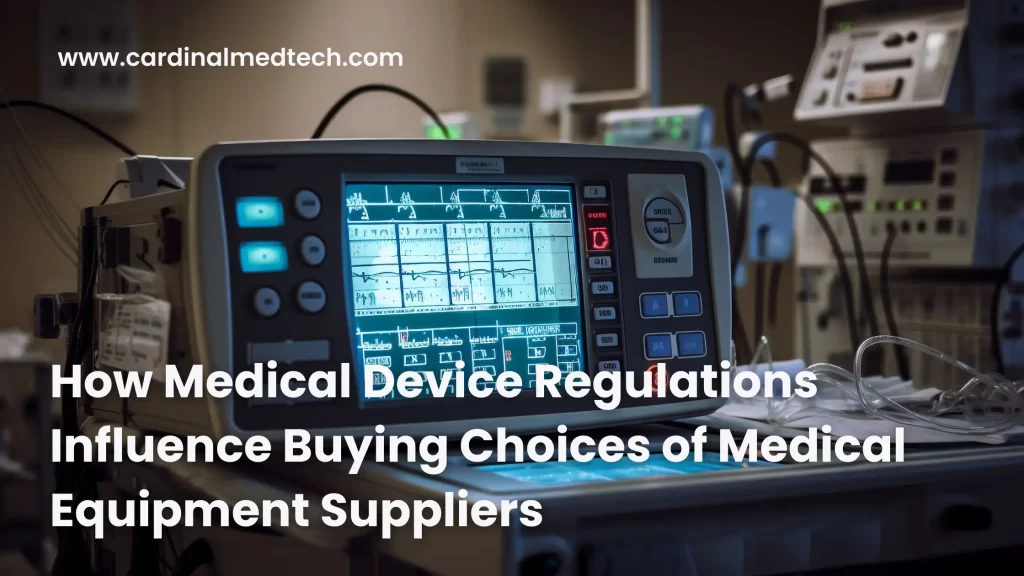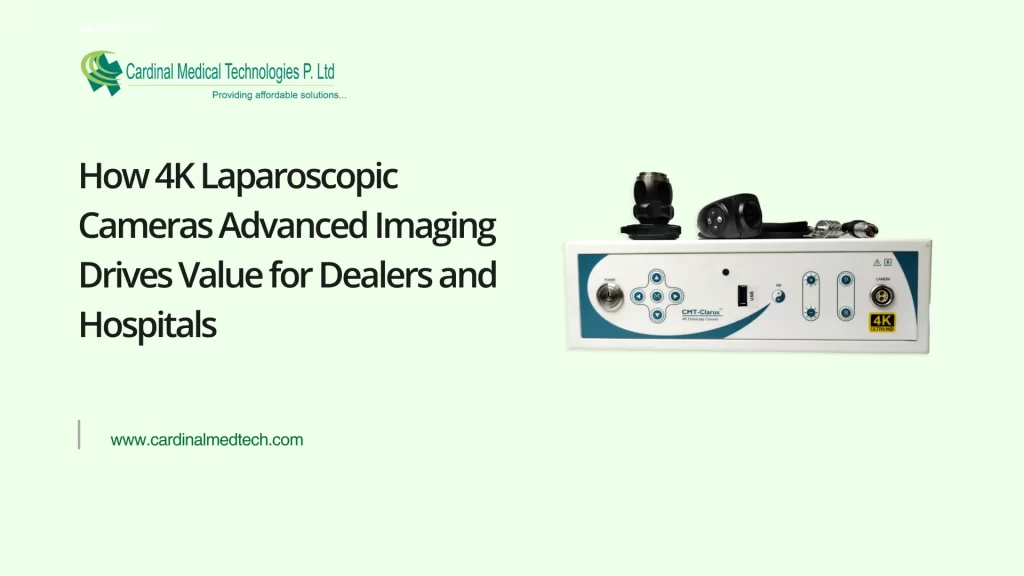How to Choose the Right Endoscope Camera System: Guide for Dealers and Hospitals in 2025
How to Choose the Right Endoscope Camera System: Guide for Dealers and Hospitals in 2025 Choosing the Right Endoscope Camera System in 2025. With rapidly evolving medical imaging, technological innovation has become critical for both hospitals and equipment dealers. From 4K visualization to AI-assisted imaging with modern endoscopy systems offers precision, clarity that redefine patient outcomes. But with so many options in the market, how do you decide which one suits your hospital’s needs, your clients’ expectations as a dealer? In this detailed guide, I’ll help you choose which one suits your hospital’s needs, your clients’ expectations as a dealer. Why Choosing the Right Endoscope Camera System Matters in 2025 Rise of HD and 4K Endoscopy Imaging Today’s endoscope camera systems are made to deliver ultra-clear, true-color visuals through HD and 4K sensors, giving surgeons enhanced precision during procedures. These high-resolution imaging techniques help to identify microstructures with reduced surgical errors and improved diagnostic accuracy. Whether the days were standard-definition imaging are long gone. Surgical Efficiency and Patient Outcomes These impacts have made the surgical endoscope improvements not only for visualization but also for surgical efficiency, with Enhanced clarity and magnification allowing for smaller incisions, faster recovery, and fewer complications, which benefits both doctors and patients alike Meeting Hospital Demands with dealer needs Offering the right endoscope device means aligning with hospitals’ needs for clarity, compatibility, and cost-effectiveness. By partnering with trusted manufacturers, dealers can ensure consistent product quality and customer satisfaction For dealers and distributors Key Factors to Consider Before Buying an Endoscope Camera System Factor What It Means What to Look For in 2025 Image Resolution and Sensor Quality Determines the clarity and detail of surgical visuals. Full HD or 4K endoscope camera systems with CMOS sensors for superior light sensitivity, color accuracy, and minimal noise. Compatibility with Existing Endoscopy Systems Ensures smooth integration with your hospital’s existing setup. Choosing a system that’s compatible with current light sources, monitors, and scopes to avoid additional costs and setup issues. Durability and Sterilization Standards Defines how well the equipment withstands frequent sterilization and usage. Look for IP-rated housings, autoclavable components, and high-quality materials that maintain image clarity over time. Ease of Operation and User Interface Affects efficiency and speed during surgical procedures. Prefer systems with touchscreen controls, intuitive menus, and quick calibration options for smoother workflow. After-Sales Support and Warranty Ensures consistent performance and service reliability. Partner with brands offering nationwide technical support, comprehensive warranty, and easy access to spare parts for long-term trust. Current Market Trends India is showing its weight globally. With rising healthcare investments, expanding hospital chains, and increasing patient awareness, the demand for endoscope camera 4K in the surgical endoscopy market is growing at a healthy 6–7% CAGR — and in India? We’re above With Cardinal MedTech’s 20+ years of manufacturing expertise, you’re not just buying equipment — you’re investing in reliability, support, and real surgical impact. 2025 Technology Trends in Endoscope Camera Systems AI-Assisted Visualization Modern endoscopy systems with Artificial Intelligence using AI algorithms for tissue differentiation, automatic color correction, and real-time image enhancement, helping surgeons make faster, data-driven decisions. This shows artificial Intelligence (AI) has already entered the operating room Even many Hospitals have started using cloud-enabled endoscope camera systems that store and share surgical footage securely to help in case reviews, telemedicine, and academic training. Compact and Modular endoscope devices are ideal for smaller clinics and mobile surgical units, offering performance without compromise. Smart suppliers now evaluate every product through a compliance lens. For example, when considering advanced surgical imaging tools, they look first for clear proof of ISO 13485, ISO 14971, and CE certification from the medical equipment manufacturer. Because hospital procurement teams routinely require these documents in tenders. Without paperwork, no purchase, no matter how innovative the device. How Cardinal MedTech Supports Dealers and Hospitals in Choosing the Right System Tailored Solutions for Every Specialty At Cardinal MedTech, with years of experience and understanding, we offer a full range of endoscope camera systems optimized for different surgical specialties, from ENT to General Surgery, due to unique imaging needs. In-House Quality and Manufacturing Excellence Every endoscope device is designed and tested under strict quality protocols. undergoes multiple inspection stages to ensure performance, durability, and sterilization safety before delivery. Expert Guidance and Post-Sales Support Our experts provide on-site demonstrations, installation assistance, and post-sales maintenance, ensuring your investment delivers lasting value. And we don’t just sell equipment, we build partnerships that last long. Steps to Choose the Best Endoscope Camera System for Your Facility Step 1 – Define Your Surgical Applications and list the departments or procedures where endoscopy is used, eg, ENT, laparoscopy, urology, etc, to identify the required specifications. Step 2 – Evaluate Features and Integration and check camera compatibility with your light source, monitor, and recording setup to ensure seamless functionality. Step 3 – Consult a Trusted Medical Equipment Partner like Cardinal MedTech, who understands both the technical and clinical aspects of endoscopy systems. By using this three-step process, you can make an easy purchase Final Thoughts To select the right endoscope camera system in 2025, Hospitals and dealers always choose future-ready systems to gain better imaging performance, patient outcomes, and business growth. Whether you need a high-definition surgical endoscope or a complete endoscopy system setup, partnering with a trusted manufacturer like Cardinal MedTech stands by that promise. Upgrade Your Endoscopy Imaging System with Cardinal MedTech, you can buy an advanced endoscope camera systems manufacturer in India.





